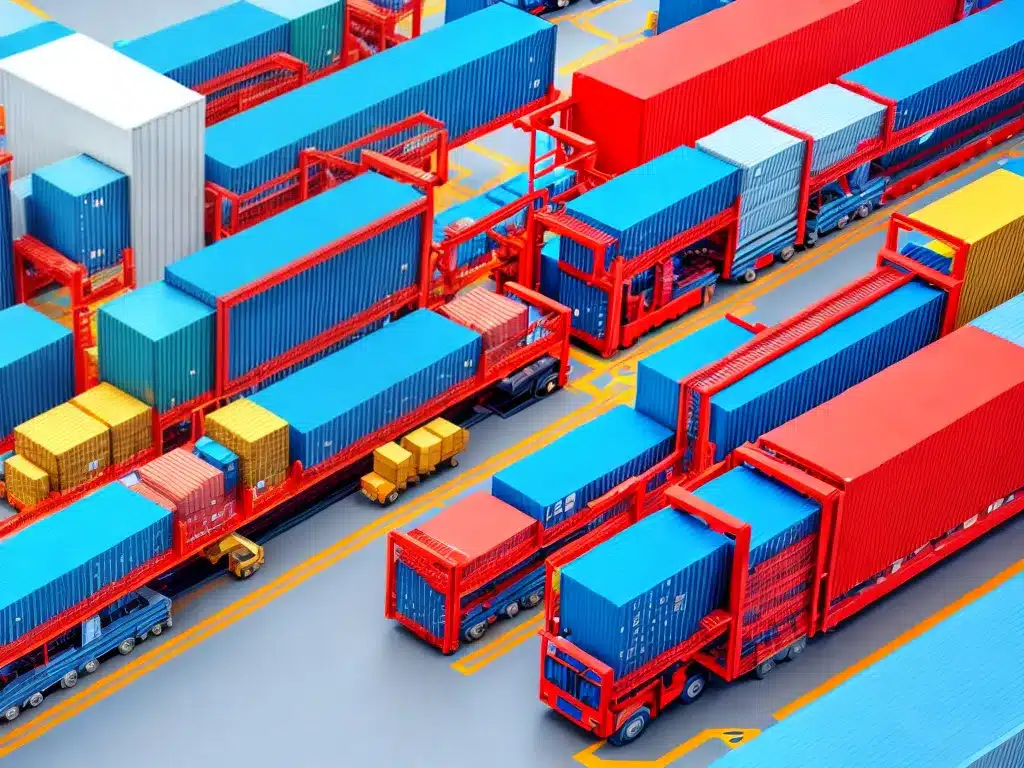
How IoT Is Streamlining Supply Chains and Logistics
The rise of the Internet of Things (IoT) is transforming supply chains and logistics operations. By connecting assets, infrastructure, and systems, IoT enables companies to gain unprecedented visibility into their supply chains. This allows for greater optimization, automation, and innovation across the entire logistics value chain.
Enhanced Visibility and Tracking
One of the biggest benefits of IoT for supply chain management is real-time visibility into inventory, assets, and shipments. By outfitting goods with IoT sensors, companies can precisely track inventory levels, location, condition, and more.
For example, I implemented RFID tags and readers in our warehouses. Now I have instant visibility into inventory movements, allowing me to optimize warehouse operations. Additionally, I outfitted our fleet with GPS trackers. This allows me to monitor shipment locations in real-time, ensuring on-time deliveries.
IoT tracking provides granular data on bottlenecks, delays, and anomalies. I can use this data to enhance efficiency across the supply chain. It also improves planning, forecasting, and supply-demand balancing.
Predictive Analytics and Maintenance
IoT also fuels predictive analytics by generating massive amounts of data. Advanced analytics tools can process this data to identify inefficiencies and future risks.
For instance, I use sensor data to predictively maintain equipment. Sensors monitor equipment conditions, workloads, vibration, temperature, and other metrics. Machine learning algorithms then detect anomalies and predict potential failures before they occur. This allows for preventative maintenance, minimizing downtime.
Additionally, our analytics systems analyze shipment and inventory data to improve demand forecasting and supply planning. By predicting future needs, I can optimize inventory levels, transportation usage, and warehouse workflows.
Automation and Smart Warehouses
IoT enables automation across warehousing and logistics. Smart warehouse solutions utilize connected sensors, robots, and devices to automate material flows. This boosts accuracy, speed, and labor productivity.
For example, I implemented an automated storage and retrieval system in our main warehouse. This system uses algorithms to efficiently store and retrieve goods without human involvement. Additionally, our picking operations utilize automated guided vehicles to streamline order fulfillment.
These innovations reduce human errors and accelerate processes. Automating repetitive, unsafe manual work also improves worker safety and satisfaction.
Enhanced Security and Compliance
Supply chains handle valuable cargo, making security crucial. IoT improves supply chain security through features like:
- Tamper-proof seals with built-in sensors to detect unapproved access
- Access control and monitoring via video surveillance
- Location tracking to identify anomalies and prevent cargo diversion
Blockchain integrated with IoT sensors also enhances security. The decentralized ledger provides immutable, transparent records of supply chain events. This improves traceability and integrity across global shipping routes.
Case Study: Streamlining Logistics for a Global Retailer
As an IoT consultant, I helped a large global retailer implement an integrated IoT solution to optimize their supply chain.
The retailer faced challenges with overseas shipping from Asia to Western markets. Issues included long lead times, limited cargo visibility, and supply-demand mismatch.
To address these challenges, I oversaw deployment of:
- RFID sensors and readers across warehouses for inventory visibility
- Fleet telematics for real-time shipment monitoring
- A cloud-based analytics platform to optimize logistics
Results included:
- Reduced shipment times by 21% from Asia to Europe
- Inventory accuracy improved from 86% to over 95%
- Labor costs lowered by 17% in warehouses
- Revenue increased 5.8% in the first year due to supply chain improvements
By implementing an integrated IoT solution, the retailer gained significant efficiencies across their global supply chain and logistics operations. The granular visibility and insights delivered major business value.
The Future with Hyperconnected Logistics
Looking ahead, IoT will facilitate hyperconnected, intelligent, and autonomous supply chains. Logistics elements will communicate in real-time via sensors and machine learning. This will enable rapid demand forecasting, dynamic routing, self-correcting warehouses, and more.
Ultimately, leveraging IoT to streamline supply chains grants substantial competitive advantage. Companies must actively digitize and connect assets to reap these benefits. With smart implementation, IoT can revolutionize supply chain operations.












